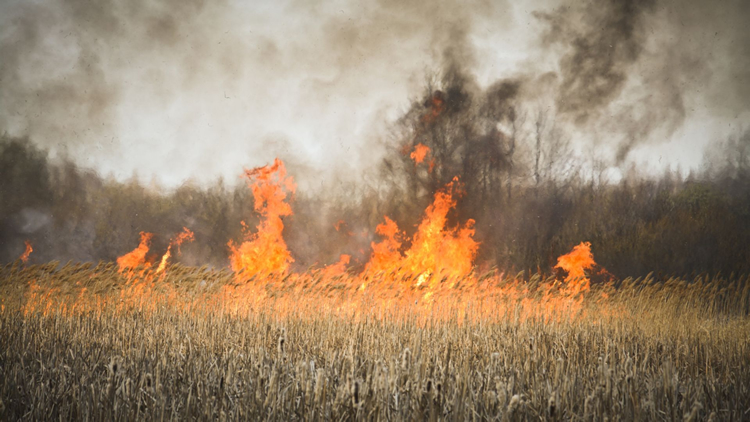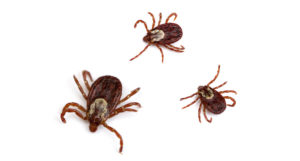I have written in the past about ticks and fire, but this is altogether a different story.
We know that you cannot burn a tick to remove it from your skin. One farmer in Maine, is ready to employ fire to fight ticks on her farmland. Elizabeth Jimenez moved to Maine from Florida, and was astonished at the number of ticks she would encounter once springtime rolled around. Springtime in the Northeast is the time when ticks emerge from their overwintering. And emerge, they did!

Elizabeth reports a veritable tick apocalypse on her property, saying that if you even consider sitting down in the field, you will be aggressively pursued by ticks. She and her fellow farmers began saving the ticks that they took off their clothing after visiting the field – and she notes the, “jar is filling fast.”
Fighting Ticks with Fire
Thing is, Elizabeth moved to her three-acre Maine property in order to start an organic farm. To be classified “organic” you must raise your crop without the use of synthetic fertilizers or pest control products. For this reason, she has decided to extensively burn her field to kill ticks that reside there. Prescribed burns are nothing new to farmers. Many farmers burn their fields to rid them of plants that are already growing there, and to prepare the soil for new plantings. This is the first time I have heard of a controlled burn specifically to eradicate ticks.
Can you burn ticks out?
 Local tick experts report that 2021 was even worse than 2022 for exploding tick populations. There were more dog ticks in Maine in 2021 than had ever been reported. There is no doubt that fire will work to this farmer’s benefit. It will most assuredly kill ticks. One expert says that Elizabeth’s effort to eradicate ticks in her field will be successful specifically for dog ticks. This is because dog ticks can predominantly be found in flat fields. However, for our friend the deer tick, that lives typically in woodland areas, the fire might not be as successful.
Local tick experts report that 2021 was even worse than 2022 for exploding tick populations. There were more dog ticks in Maine in 2021 than had ever been reported. There is no doubt that fire will work to this farmer’s benefit. It will most assuredly kill ticks. One expert says that Elizabeth’s effort to eradicate ticks in her field will be successful specifically for dog ticks. This is because dog ticks can predominantly be found in flat fields. However, for our friend the deer tick, that lives typically in woodland areas, the fire might not be as successful.
After she burns, she plans to create a visual barrier of wood chips around her field in hopes of keeping ticks away. Though, experts implore that this barrier is more for humans than ticks. It lets us know when we are leaving or entering the area where ticks are or are not.
The aftermath of burning ticks out.
Burning underbrush in wooded areas to fight ticks is nothing new. It is effective in the short-term, but what happens after the burn? As vegetation begins to regenerate, it creates a very tick-friendly environment. As wildlife reenters the area to feed, they will bring ticks back with them.

This farmer also has an out-of-season tick control approach. She intends to plow to keep her fields free from snow in the winter. As we know, a blanket of snow will act as insulation to protect ticks from freezing to death in the winter. She believes that she can get ahead of the springtime tick rush next year by allowing cold Northeast winter weather to kill ticks that might be trying to overwinter in her field. Another great method of fighting ticks in the winter is through the use of tick tubes. Tick tubes, which contain an EPA-registered insecticide applied to cotton, are placed in potentially tick-friendly and rodent-friendly environments. Mice scrounge for the treated cotton and carry it back to their nests. Ticks that encounter these mice or their nests will be killed by the insecticide.
Natural Pawtucket tick control.

While many farmers and land owners protect their fields with EPA-registered tick control solutions, there are tick repellents available that are comprised of natural products. Professional Pawtucket tick control companies offer natural tick protection through products that are created with essential oils, made by Mother Nature herself.